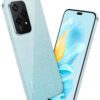Addressing the Global Digital Divide
The persistent global digital divide, characterised by approximately 1 billion households lacking fixed broadband access, remains a daunting challenge. According to an analysis by Ericsson, projections suggest that approximately 30% of households worldwide may still lack broadband connectivity by 2028. Concurrently, 3GPP technologies, including LTE and 5G, are on the verge of providing extensive coverage, with LTE reaching over 95% of households globally and 5G at approximately 85% by 2028. This widespread household coverage creates a unique opportunity for mobile operators to offer Fixed Wireless Access (FWA) services in addition to their Mobile Broadband (MBB) offerings.
Unique Challenges in the African Context
Africa, with its comparatively lower level of broadband penetration compared to other global regions, faces unique challenges. The crucial question arises: how can unconnected households and businesses be effectively and swiftly covered to bridge the digital divide?
Finding the Right Solution for Home Broadband
Solutions for home broadband can be categorised into three primary groups: fixed-dedicated line solutions such as fiber or DSL, satellite-based solutions, and fixed wireless access (FWA). While xDSL and cable solutions have relatively low investment requirements, particularly if existing infrastructure is available, fiber’s appeal lies in its ability to deliver high-speed connectivity. However, xDSL and cable may encounter limitations related to speed and distance, affecting their future-proofness. Fiber, on the other hand, involves substantial upfront investments, including civil engineering and project approvals, contributing to deployment challenges. In this context, FWA stands out due to its ability to offer lower costs (as low as a tenth of fiber deployment costs), enhanced flexibility, and rapid deployment timelines.
Moreover, while fixed broadband services are primarily used for home connectivity, FWA can serve multiple use cases, including Mobile Broadband (MBB) and Internet of Things (IoT), utilizing the same radio network infrastructure to address diverse needs.
FWA Solutions for Bridging Africa’s Connectivity Divide
FWA emerges as a pivotal tool for addressing Africa’s broadband requirements. While 4G FWA provides an initial stepping stone, the potential of 5G is evident in its capacity to deliver fiber-like speeds, complementing fixed broadband services in a country. Remarkably, several African markets, including Angola, South Africa, Nigeria, and Zimbabwe, have already begun offering 5G FWA services. This shift towards FWA can be attributed to its cost-effectiveness, rapid deployment capabilities, and inherent flexibility, making it an attractive alternative to traditional fixed services.
An exemplary instance of FWA’s potential to enable digital inclusion beyond home connectivity is the recent joint initiative between Ericsson and FREE Senegal. This initiative aims to connect several schools with Fixed Wireless Access technology while providing laptops, learning content, and teacher training to support ecosystem development. The project aligns with Ericsson’s Connect to Learn program, a global education initiative harnessing technology to enhance educational opportunities.
The Multifaceted Deployment Strategies of FWA
FWA entails using wireless access for the last mile of connectivity, but its deployment methods vary. Two prominent approaches are the “best-effort” and “speed-based” strategies.
In the “best-effort” scenario, households are equipped with an indoor wireless router featuring wide-area wireless capabilities (e.g., 3GPP). Wi-Fi or LAN cabling connects the router to local devices, and the router and subscription offer portability as long as the subscription is active. However, the nomadic nature of these devices makes it challenging to provide high-grade guaranteed offerings.
The “speed-based” FWA approach, on the other hand, focuses on outfitting homes with wide-area wireless-capable devices, either outdoor-mounted or indoor units with advanced antennas. Managed similarly to fixed broadband, this approach employs standard protocols for remote setup and fault handling. Custom price plans emphasise data rates, mirroring fixed broadband offerings, with superior performance often resulting in higher Average Revenue Per User (ARPU) compared to basic options. Subscriptions are typically location-bound, associated with fixed-mounted Customer Premises Equipment (CPEs), or adjusted upon relocation, enhancing FWA service precision.
FWA’s Role in Closing Africa’s Digital Divide
In conclusion, FWA, particularly 5G FWA, emerges as a potent instrument to bridge Africa’s digital divide. Governments and regulators keen on addressing the digital divide should prioritise the swift and affordable release of the frequencies required for 5G FWA.
Leveraging the expansive network scale, robust device ecosystem, and innovation of 5G, FWA stands optimally poised to connect homes, enterprises, and communities currently without broadband access. By facilitating fast and reliable broadband access, FWA catalyses economic growth and empowerment, strategically positioning Africa to harness the opportunities of the digital age.
By Chafic Traboulsi, Vice President and Head of Networks at Ericsson Middle East and Africa










